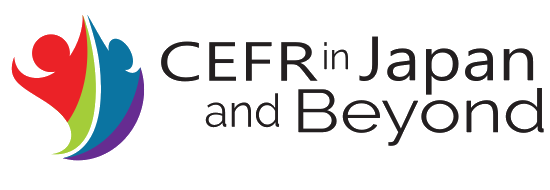Volume1
CEFR Journal - Research and Practice
ISSN: 2434-849X
Publication Statement - Mission Statement
Please contact the editors and submit to:
This email address is being protected from spambots. You need JavaScript enabled to view it.
Mission statement
The CEFR Journal is an online, open-access, peer-to-peer journal for practitioners and researchers. Our board of editors comprises stakeholders on a wide range of levels and from around the world. One aim of our journal is to create an open space for exchanging ideas on classroom practice and implementation related to the CEFR and/or other language frameworks, as well as sharing research findings and results on learning, teaching, and assessment-related topics. We are committed to a strong bottom-up approach and the free exchange of ideas. A journal by the people on the ground for the people on the ground with a strong commitment to extensive research and academic rigor. Learning and teaching languages in the 21st century, accommodating the 21st century learner and teacher. All contributions have undergone multiple double-blind peer reviews.
We encourage you to submit your texts and volunteer yourself for reviewing. Thanks a million.
Aims, goals, and purposes
Our aim is to take a fresh look at the CEFR and other language frameworks from both a practitioner’s and a researcher’s perspective. We want the journal to be a platform for all to share best practice examples and ideas, as well as research. It should be globally accessible to the wider interested public, which is why we opted for an open online journal format.
The impact of the CEFR and now the CEFR Companion Volume (CEFR/CV) has been growing to previously wholly unforeseeable levels. Especially in Asia, there are several large-scale cases of adoption and adaptation of the CEFR to the needs and requirements on the ground. Such contexts often focus majorly on English language learning and teaching. However, there are other language frameworks, such as the ACTFL and the Canadian benchmarks, while the Chinese Standard of English (CSE) is also on its way. On the one hand there is a growing need for best practice examples in the form of case studies, and on the other hand practitioners are increasingly wanting to exchange their experiences and know-how. Our goal is to close the gap between research and practice in foreign language education related to the CEFR, CEFR/CV, and other language frameworks. Together, we hope to help address the challenges of 21st century foreign language learning and teaching on a global stage. In Europe, many take the CEFR and its implementation for granted, and not everyone reflects on its potential uses and benefits. Others are asking for case studies showing the effectiveness of the CEFR and the reality of its usage in everyday classroom teaching. In particular, large-scale implementation studies simply do not exist. Even in Europe, there is a center and a periphery of readiness for CEFR implementation. It is difficult to bring together the huge number of ongoing projects from the Council of Europe (CoE), the European Centre for Modern Languages (ECML), and the EU aiming to aid the implementation of the CEFR. This results in a perceived absence in the substance of research. Outside Europe, the CEFR has been met with very different reactions and speeds of adaptation and implementation. Over the last few years, especially in Asia, the demand by teachers for reliable (case) studies has been growing.
For more than a decade, the people behind this journal – the Japan Association for Language Teaching (JALT) CEFR & Language Portfolio special interest group (CEFR & LP SIG) – have been working on a number of collaborative research projects, yielding several books and textbooks, as well as numerous newsletters. This is a not-for-profit initiative; there are no institutional ties or restraints in place. The journal aims to cooperate internationally with other individuals and/or peer groups of practitioners/researchers with similar interests. We intend to create an encouraging environment for professional, standard-oriented practice and state-of-the-art foreign language teaching and research, adapted to a variety of contexts.
Editorial Advisory Board
Please contact the editors and submit to:
This email address is being protected from spambots. You need JavaScript enabled to view it.
Guidelines
| Submission: | Original work |
| Contributions: | Articles (research), reports (best practice, work in progress, conference presentations), research notes, book reviews, information exchange |
| Language(s): | English (British, American, international) preferred, but not mandatory. Other languages by request, with an extended abstract in English. |
| Review type: | Peer review, double blind review |
Peer review guidelines:
We ask all peer reviewers to make every reasonable effort to adhere to the following ethical guidelines for the CEFR Journal – Research and Practice submissions that they have agreed to review:
- Reviewers must give unbiased consideration to each manuscript submitted for consideration for publication, and should judge each on its merits, without regard to race, religion, nationality, sex, gender, seniority, or institutional affiliation of the author(s).
- Reviewers should declare any potential conflict of interest prior to agreeing to review a manuscript, including any relationship with the author that may potentially bias their review.
- Reviewers must keep the peer review process confidential; information or correspondence about a manuscript should not be shared with anyone outside the peer review process.
- Reviewers should provide a constructive, comprehensive, evidenced, and appropriately substantial peer review report.
- Reviewers must avoid making statements in their report that might be construed as impugning a person’s reputation.
- Reviewers should make all reasonable efforts to submit their report and recommendation in a timely manner, informing the editor if this is not possible.
- Reviewers should call to the journal editor’s attention any significant similarity between the manuscript under consideration and any published paper or submitted manuscript of which they are aware.
Adapted from © Taylor & Francis Online
Author instructions:
deGruyter Mouton guidelines for Language Learning in Higher Education (CercleS) and style sheet.
(Updated October 13th, 2024 MGS)
(Updated February 12th, 2025 MGS)

